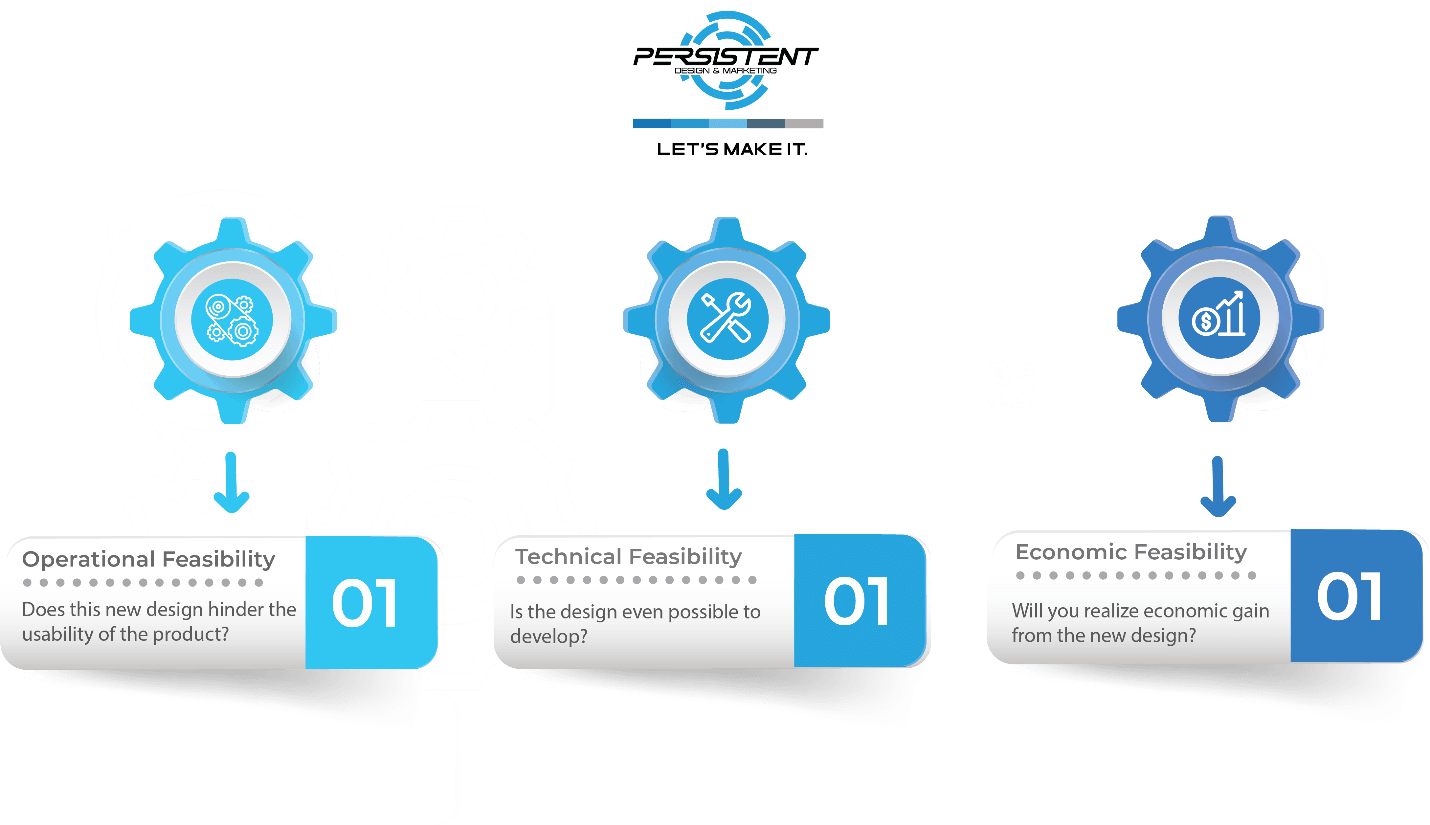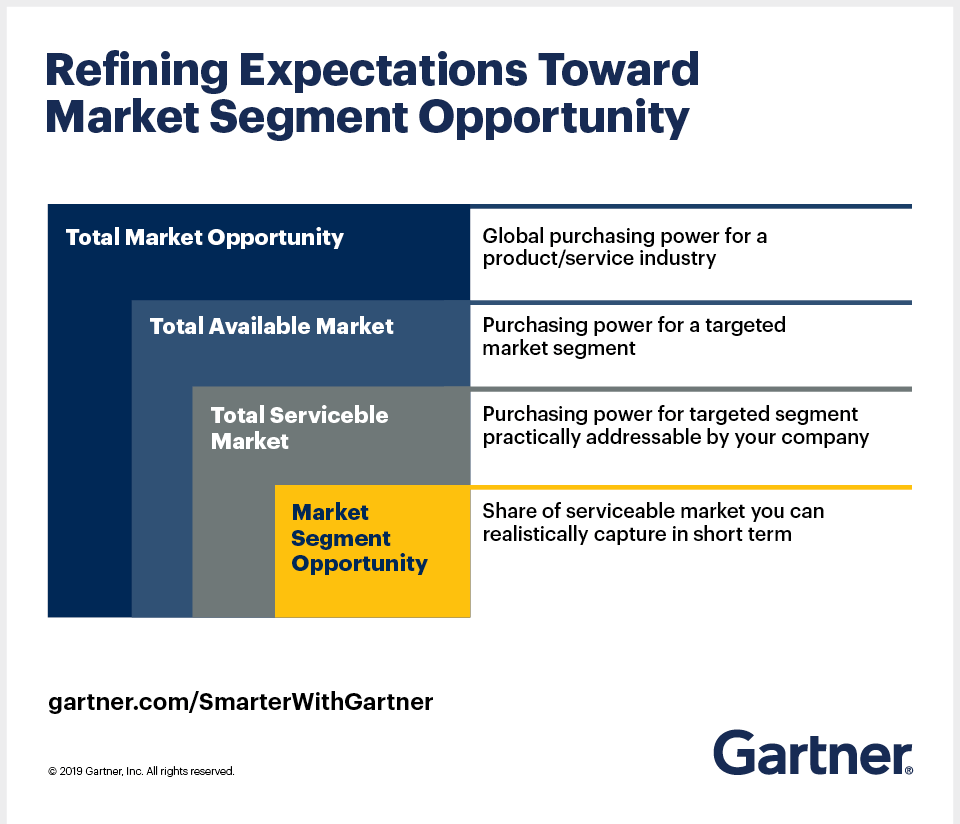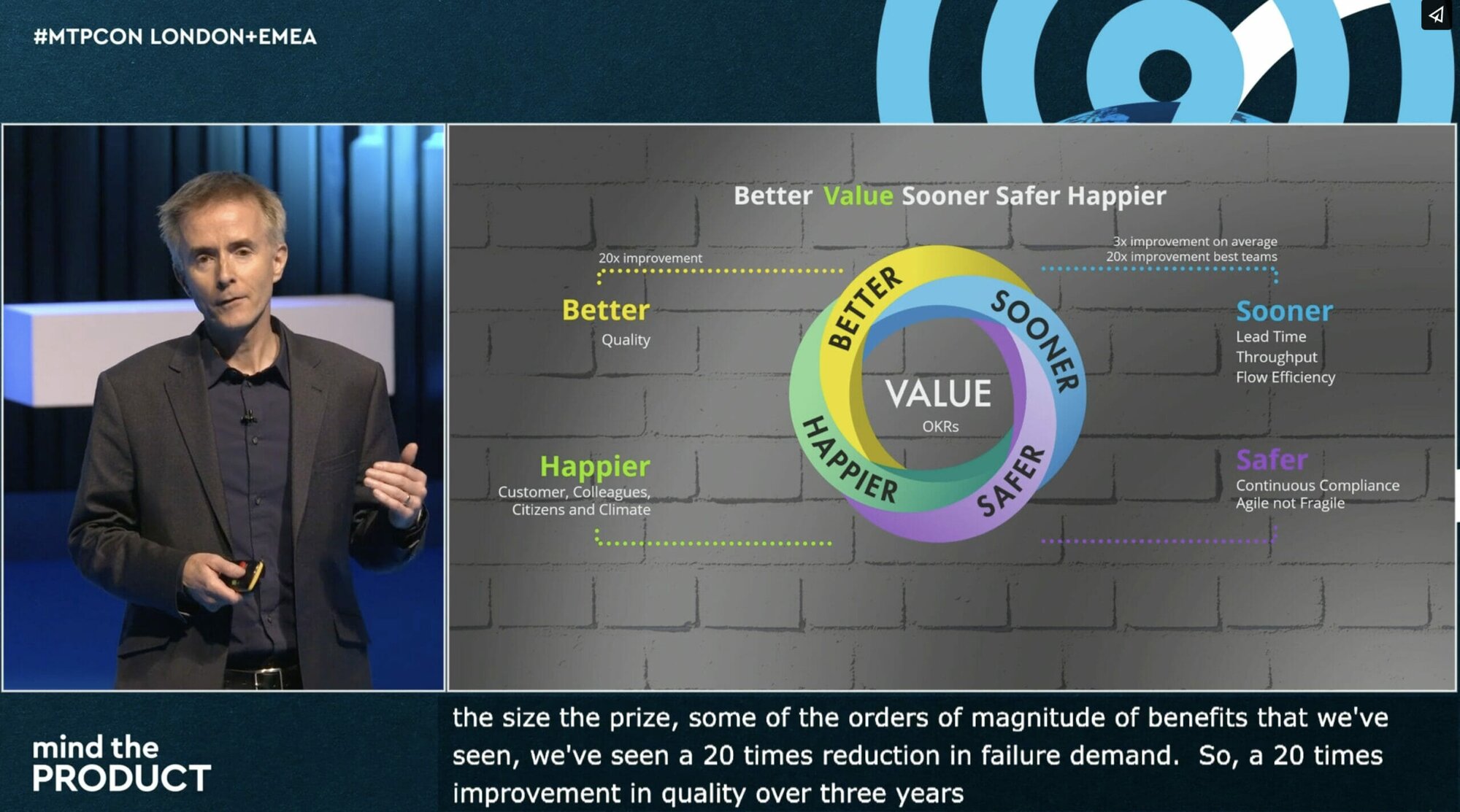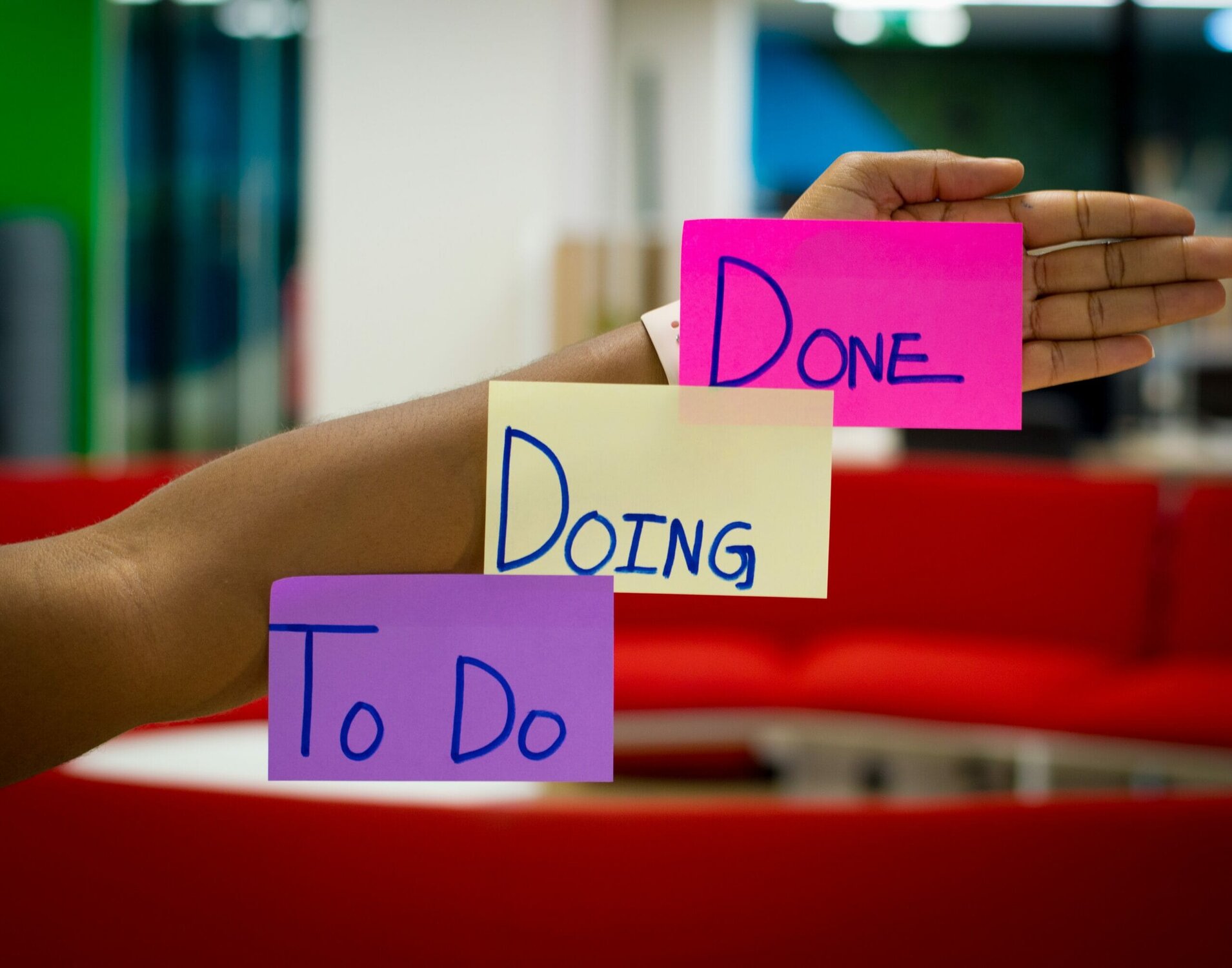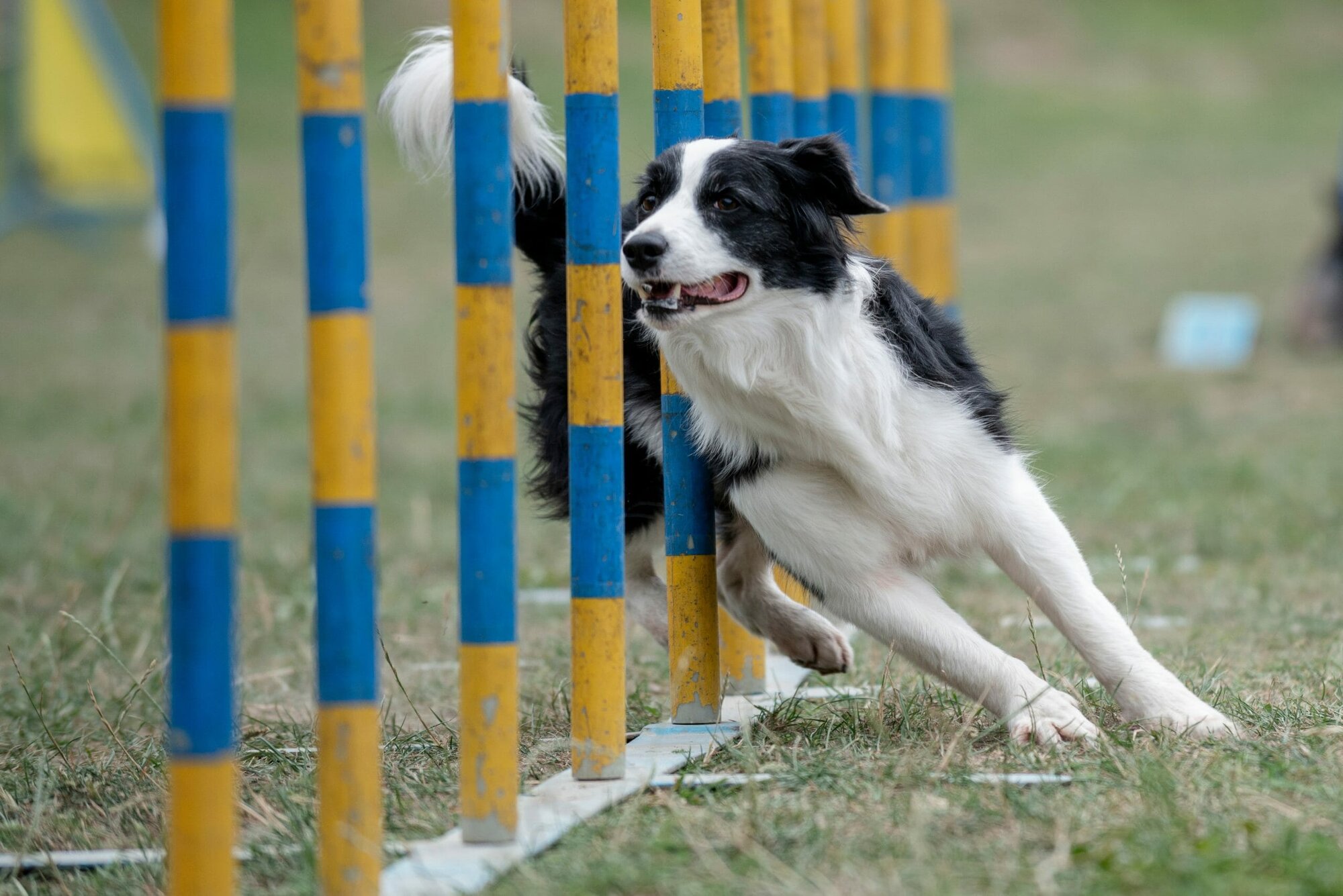Product development will not ever be an easy task. We have worked on a multitude of projects over the years and to this day we continue to run into roadblocks during development. This is a natural occurrence when you are tasked with bringing innovative ideas to life. Nonetheless we — along with many other teams — have created a process to minimize roadblocks and increase efficiency when creating new products.
This process should give anyone a great roadmap and understanding of how someone should go about tackling the intimidating procedure of new product development. Broken down into seven comprehensible steps, our new product development process will bring to light many of the factor’s product innovators may not think of when diving into a project.
Product ideation
Everyone has great ideas. That is what drives innovation forward and keeps competition within industries. Unfortunately, not all these ideas are that great. Therefore, we see a multitude of businesses fail. Bad ideas may fail one or more of 3-part feasibility test.
Operational feasibility
To understand this, a great example would be the evolution of reusable plastic cups. These cups replaced glass cups, made those cups cheaper, all the while without sacrificing the quality of an object that holds water to drink out of. Sure, there may be arguments about plastic not being eco-friendly, but that is not to be factored into this example.
Technical feasibility
Technical feasibility is self-explanatory. Trying to charge your phone while it is sitting in your pocket without any energy input is not technically feasible. Most people that have great ideas fail the technical feasibility test since they are simply not possible.
Economically feasible
This is the degree to which the costs or expenses to create this product will not outweigh the benefits gained. For example, if you wanted to invent a popcorn machine to save $0.10 per bag popped, but it costs $0.20 to power per bag, that is not economical.
During product ideation, you will need to figure out whether to build a team or find investors. The product development team should be able to piece together a clear path that results in a store ready product.
After your product idea has passed each feasibility test noted above, it will be time to move into the seven-step process. Below we will break down exactly how each step should be executed along with some notes and examples that will enable you to grasp each concept. These seven steps require you to put in effort. This effort will not immediately result in monetary gain or fulfilment, and that is okay. Do not become discouraged.
Research the market and market size
This may be hard to do. For example, starting a design consulting business. How do you know where the entrepreneurial market is going to go? Some industries cannot be researched and some that are may not even have clear data. If you read the book Calling Bullshit by Carl Bergstrom and Jevin D. West, you may start to believe that a lot of data and industries contain a good number of fraudulent statistics and analysis.
Another roadblock to understanding your industry might be money. Data is not cheap. If you search any industry data — especially niche industries — you often run into a website asking for a credit card payment for a large sum of money. This is not ideal for young business owners.
If you have the privilege of accessing this data and believe it’s accurate, you’re in luck. Many entrepreneurs developing their first product may believe that their target market is much larger and more profitable than it actually is. This happens often when young business owners are a part of their target market and believe it’s the next greatest thing since sliced bread. While it’s okay to become excited about your product and endeavors, you can’t become emotionally blind to what’s occurring.
If you find that your target market is larger than you expect, then that’s great. Just know that obtaining that market share will be much harder than you believe or expect. A small amount of the target market will be early adopters. They will take time to migrate your product into the majority within your industry. This infographic gives you a good understanding of how the trickle-down of market segmentation works in relation to your product.
Another thing you must understand is the demographics of your customer. Are they an older crowd within your industry or will you be introducing an old concept in a new way to the younger crowd? Let’s use JUUL as a great example. While this company was put under fire a few years back, they did a terrific job of branding and appealing to the younger generation.
As depicted in The Broken Docuseries JUUL started out by making the product look like an apple TV remote. There was no giant, bulky box that tied itself to the original, grungy vape crowd. This design was sleek, stylish, and futuristic looking. Additionally, look at their old ads. They made, “JUUL’ing” look young and hip. Their creatives commonly featured younger individuals having a good time while getting heavily addicted to nicotine. Lastly, the product was different. It did not create giant clouds of thick fog every time someone exhaled it. This technology was advanced and solved the problem for those who wanted to vape in secret.
JUUL successfully appealed their product to the younger generation. Whether they admit it or not, this was done from conducting long-winded and serious market research. If JUUL were to not conduct this research, they may have just created another dull boxy vape that the younger generation did not have interest in catching onto.
Research competitors and product desire
More than likely, your product — or something like it — already exists. Competitors will be out there to retain their market share and fight back once you enter. Additionally, you need to understand if there is an actual desire for your product in the space. If you are an entrepreneur that is a part of your target market or have experienced the problem yourself, you may be able to find this out yourself. If you are not a part of the market, you’ll need to do this yourself.
Below are two surefire ways that have been proven to return valuable data which will solidify that your product is needed in the world. Once you have proven to yourself that this product can sell, I would advise to research which solutions already exist through competitor analysis.
How to research product desire
After you have done competitor research, diving into market desire would be much easier. By now you know all kinds of search terms that your product may be called, so this will be easy. I would highly recommend utilizing SEMRush. SEMRush is a platform where you can analyze search traffic data, domain authority, and most importantly conduct keyword research.
Let’s continue with the beer examples. After typing in, “metal pong cup” you find out that 2,900 people have searched for that this month. 1900 people have searched for, “solo cup made of metal.” Finally, 880 people are searching for, “metal cup shaped like a red solo.”
If you were designing an innovative beer glass that replaced a solo cup, it is safe to say that there is a demand for it. If you had a few of these customers per month, sales would be pretty nice to start. Additionally, there may be a multitude of individuals that visit their local store in search of this but do not care about the product enough to search online at length for it.
Another way to analyze your target would be by simply asking them. Create a google form and ask non-leading questions on them for your friends and potential target audience to answer. This will enable you to understand whether your target market will buy this product and what it may need to incorporate.
How to research your competitors
Conduct a quick google search of your product name, function, or industry. What comes up on the SERP’s? If you search ‘beer glass set’, you will see a multitude of businesses selling beer glasses. But if you search, ‘neon light up beer glass’ you may not get anything in return.
Now it’s important that your competitor research should not just be a scan of the first page of google search results. You should spend a lot of time digging into search engines and learning what other people define your product to be. You may not know that another word for ‘beer glass’ is ‘tankard.’
Decide and strategize
This is where you need to make decisions. By now you have a full grasp of what your market wants, and the size of market share you may be able to gain within your first 12 months of product launch. Will your product be a low-cost option that is not yet in the market, but your research shoes may thrive? Does the market need an innovative disruptor? These are the decisions you need to make. Unless you become awfully mistaken, there is no looking back.
More importantly, how are you going to create the product? Write out the roadmap that will lead you from idea to tangible reality. Do you have the skills to get this done or will you need to build a team around you? Do you know a reliable manufacturer? If you don’t know the answer to any of these questions it may be ideal to hire a product development team to help your business confidently create your product.
Build the product
How will this be done? Are you capable of building the prototype in your basement? Or will you need to hire a prototyping company? If you have the skills but not the tools, I advise joining your local makerspace. Many of these institutions have 3D printers, CAD software, woodshops, and more for you to utilize.
If you do not believe you could make the prototype yourself, don’t make the mistake of pushing to make it happen. Often there are better strategies. Contacting a manufacturer is your next best option. Utilizing a manufacturer for prototyping is great because they are part of the development. Rather than bringing them a finished prototype that they need to reverse engineer, they help you craft it with the aid of their previous experience.
Have your target market test the prototype
Having influencers and potential customers test the product is omnipotent. Ordering 5000 units of something for it to just be rejected by your market may destroy your company and waste a lot of money in the meantime. Do not rush during this stage. Some business owners are so excited to get their product out into space, and they overlook steps that must be made to lead to success.
Keep in mind that some people may pitch you some lofty edits that they may not be able to understand makes sense from a business perspective. While your target audience is to steer the direction of the product if it is not economically feasible, do not try to make it happen.
Ensure quality of production
This is important and often people forget to ensure quality. Your manufacturer may have given you an amazing prototype that you stressed tested over a wide array of scenarios. This does not mean that production will yield the same result. Prototyping does not incorporate an assembly line that is used when 100,000 units are being developed.
You can avoid this problem in two ways. First, find a liaison overseas that you can trust. This individual can show up at factories on your behalf and see the product for themselves. Think of your third-grade teacher. They would walk around during a test to make sure you were not looking at your neighbor’s test to cheat. If you could go yourself, that would be great too. Here you could show your enthusiasm and confidence so that the factory workers can see how confident you are. This way they won’t want to let you down.
The second way to avoid this problem is to only pay for 50% of the product before it is shipped. This way, you can check for any defects and ship them back. Most manufacturers that are legit will follow these guidelines. If they don’t, be aware that this manufacturer may not be someone you can trust.
Launch
The time has come. Your product is ready. The market research and analysis is complete. You have stress tested the design and gotten advice from your target market. The manufacturer you are moving forward with has met your company representative and they confirmed that the factory is good at what they do.
The final part of the product development process is to celebrate by launching your product into space. Ask influencers to post about it. Offer a small launching discount to encourage skeptics to take part in your new product. This is an exciting time and while it may be stressful, it should be enjoyed.
The product development process is tough. Many people are discouraged by the totality of it if they are inexperienced. If you follow these steps and you are persistent in reaching your end goal, it will happen. Your dream product will eventually end up in your hands. Get out there and make it!
Discover more content on product development process. For even more content on a range of product management topics, see our Content A-Z.


